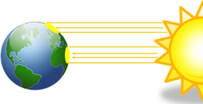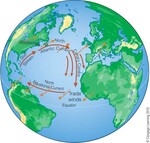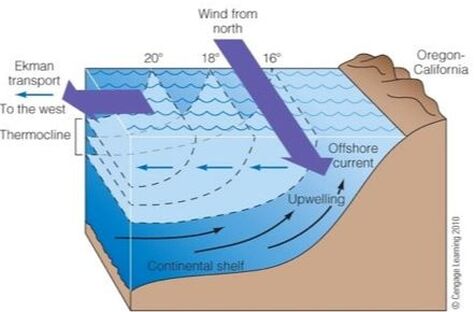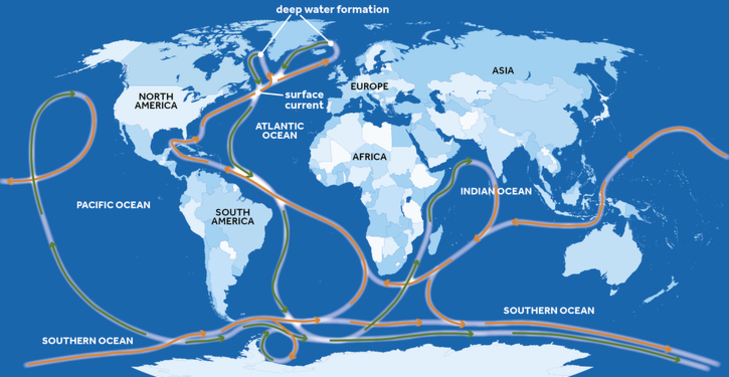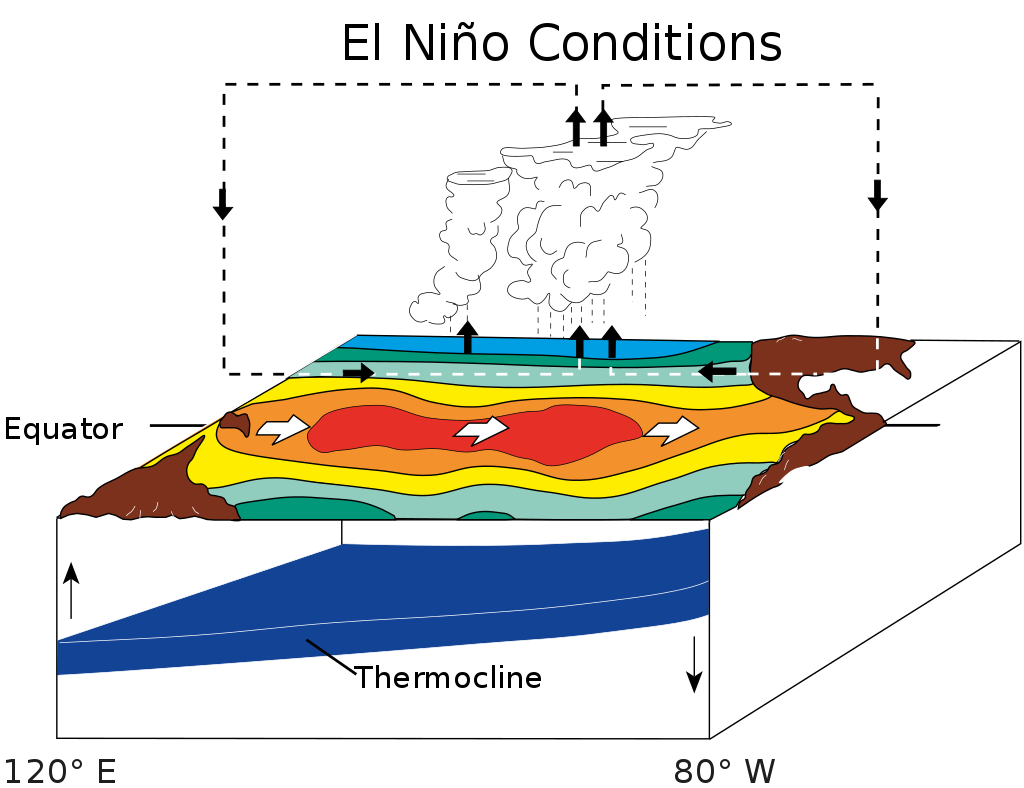This topic will look at the role of the atmosphere and the oceans on a global scale as a method of transferring heat and the massive effect that they have on the world's climate system. The Earth is unevenly heated and covered with two quite different fluids, the atmosphere (gas) and the ocean (liquid), which are both free to move. The movement of these fluids is primarily driven by changes in density. The two interact with other, which complicates things a bit more! The fact that the oceans are also constrained by the geography of the continents and ridges and that the continents affect the pattern of the heating of the atmosphere further add to this. Throw in that all this occurs on a spinning Earth and it becomes even more challenging. The easiest way of studying this is to split the circulations into sections.
The overall effect of this global ocean/atmosphere circulation system is that heat is transported from the tropics to the polar regions. In physics terms, it is a gigantic heat engine.
The overall effect of this global ocean/atmosphere circulation system is that heat is transported from the tropics to the polar regions. In physics terms, it is a gigantic heat engine.
